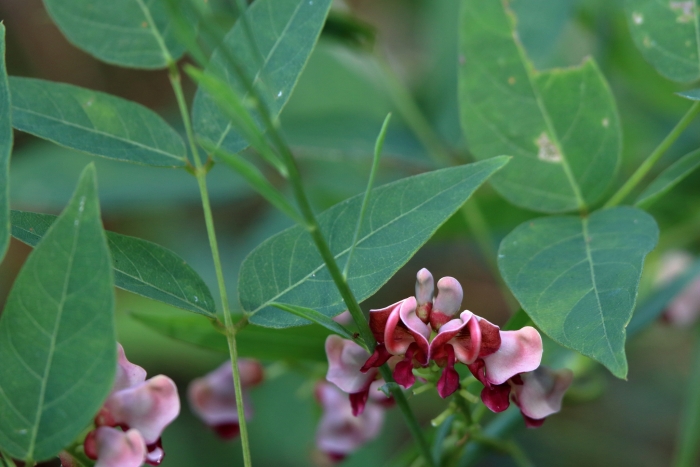American Groundnut
(Apios americana)
American Groundnut (Apios americana)
/
/

Lauren McLaurin
CC BY 4.0


















































Estimated Native Range
Summary
American Groundnut is valued for its adaptability and the nutritional value of its tubers, which have been a traditional food source for Indigenous peoples. It is used in restoration projects, naturalized plantings, and permaculture gardens. This vine prefers moist, well-drained soils and can tolerate a range of light conditions from full sun to partial shade. While it is relatively low-maintenance, it can become aggressive in garden settings if not managed properly. The plant is a larval host for the Silver-spotted Skipper butterfly (Epargyreus clarus), adding to its ecological value.CC BY-SA 4.0
Plant Description
- Plant Type: Vine
- Height: 8-15 feet
- Width: 2-6 feet
- Growth Rate: Rapid
- Flower Color: Brown, Purple
- Flowering Season: Spring
- Leaf Retention: Deciduous
Growth Requirements
- Sun: Full Sun, Part Shade
- Water: Medium
- Drainage: Fast, Medium, Slow
Common Uses
Bee Garden, Bird Garden, Butterfly Garden, Edible*Disclaimer: Easyscape's listed plant edibility is for informational use. Always verify the safety and proper identification of any plant before consumption., Fragrant, Potted Plant, Showy Flowers, Water Garden
Natural Habitat
Wetland habitats, including riparian zones, swamps, and moist woodlands
Other Names
Common Names: Potato Bean, Hopniss, America-Hodoimo, Cinnamon Vine, Indian Potato, American Potatobean
Scientific Names: , Apios americana, Apios tuberosa, Glycine apios, Apios americana var. turrigera, Apios apios, Apios americana f. americana, Apios americana f. cleistogama, Apios americana f. keihneri, Apios americana f. mcculloughii
GBIF Accepted Name: Apios americana Medik.